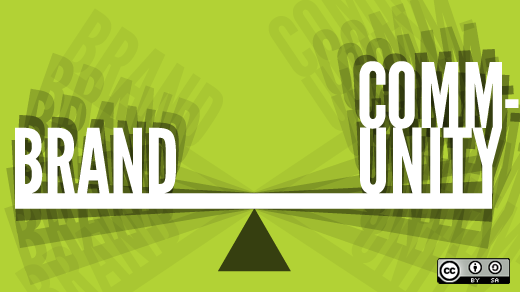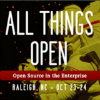Being a brand manager for an open source company—like Red Hat—is completely different than for traditional brands—like Kraft, Planters, Sara Lee, and Lowe's Home Improvement.
John Adams says he is constantly being challenged with questions of ownership. But, he wouldn't have it any other way.
Since joining Red Hat as Brand Manager, he's been living and breathing the open source way. In this interview he discusses his approach to branding for "the world's open source leader."

As a branding guy, how did you get into open source?
I began my career in management consulting but, after earning my MBA, I made a career change into marketing and, more specifically, brand management. I worked on large, well-known consumer brands including Kraft, Planters, Sara Lee, and Lowe's Home Improvement before learning of an opening on the brand team at Red Hat. Joining Red Hat was my first exposure to the high tech industry and to open source. However, from day one I began living and breathing the Red Hat brand and, by default, the open source way. It truly represents my preferred way of working with others and now I can't see myself operating any other way.
In 2011 you wrote an article for Opensource.com about a Harvard Business Review article written by Scott Goodson who said: "If you really want to show the world what you believe in and stand for, how about telling us what you stand against?"
How did this influence your approach as Brand Manager at Red Hat? And, what is your new sticky idea?
Writing that article, and the research I put in beforehand, really helped me to better articulate our brand strategy here at Red Hat.
At Red Hat, we've always positioned our software—and open source software in general—as a smart alternative for enterprising CIOs to the proprietary options at their disposal. We work hard to articulate the added value that choosing an open source approach can add to your enterprise. Internally, we've been using a new phrase to encapsulate that value: community-powered innovation.
Our belief is that the open source principles of openness, transparency, connectedness, and collaboration are mirroring many of the macro trends that are happening on a global scale. When today's IT professionals begin to relate what they're experiencing themselves and the value of their connective networks on a daily basis to their businesses and industries, the power of an open source approach will become evident.
Red Hat has grown a lot in the last few years: reaching 1 billion in annual revenue and moving its global headquarters, Red Hat Tower, to downtown Raleigh, NC.
How has your strategy for branding changed along with that rapid growth?
As complicated as our rapid growth has made things in many areas across the company, I can say with confidence that we have not wavered from the core beliefs that represent our brand: that is, that open source represents a better way to both develop technologies and operate at a business level. Our unwavering commitment to this philosophy has helped us remain focused, engaged, and motivated as a global community of Red Hat associates despite the inertia of a rapidly changing company.
By embracing an open source approach and all that it entails (e.g. meritocratic decision-making), we have been able to remain a relatively flat organization free from the trappings of hierarchy and autocratic decision-making. We continue to embrace collaboration as the 'secret sauce' for delivering innovation at a faster pace and with superior products than otherwise possible.
What matters most to enterprise businesses right now?
At a surface level, we continue to hear many of the same common concerns across our customer base: IT professionals are being asked to do more with less and, consequently, they are looking for high quality solutions at a high value that can be delivered quickly.
Cost, stability, and security are high priorities. However, when you dig a bit deeper, you learn that enterprises are looking for technology partners that can not only help them solve today's problems, but can help them anticipate what are tomorrow's opportunities. As a pure open source company, we know that we can help our customers tap into community-powered innovation to not only have visibility and access to upstream development, but to leverage the power of the Red Hat network—encompassing our diverse customer base, our partners, and our involvement in open source communities of development—to more quickly solve their problems with new and novel approaches.
What will you talk about at the All Things Open conference coming up in Raleigh in October (without giving too much away)?
Being a brand leader at an open source company is much different than at more traditional companies, because you're constantly being challenged with questions of ownership. Who owns an open source brand—the company or the community? And, these questions bleed into the legal field when the conversation turns to one of trademarks.
I am fortunate to have worked alongside a leading thinker in the field of trademarks for open source companies, Pam Chestek (read her interview here), and am excited to be co-presenting with her at the conference. We'll be talking about the unique situations, challenges, and approaches for both branding and trademark strategies for anyone interested in the field, whether currently working at an open source company or not.
Read more from the All Things Open speaker interview series.








4 Comments